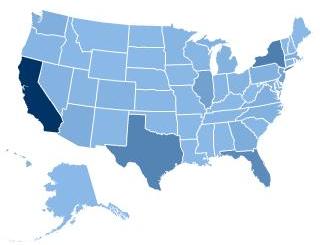2006 Annual Benefit: A Salute to Mexican Americans |
Marriott Rivercenter
San Antonio, Texas
June 23, 2006
6:30pm Reception | 7:30pm Dinner
Join the American Immigration Law Foundation for our annual benefit dinner and awards program, where we will focus on the many contributions the United States has received from Mexican Americans. The over 20 million Mexican Americans in the U.S. represent both a powerful economic force and a signicant influence on American culture. These immigrants and their children can be found in all aspects of our society. AILF salutes their achievements.
 Carlos Alvarez Business Leader |  Carmen Lomas Garza Artist |  Alma Lopez Appeals Court Judge |
 Victor Villasenor Author |  Monica Navarro Master of Ceremonies KWEK-TV |
|
A BRIEF HISTORY OF MEXICAN IMMIGRATION TO AMERICA
Instant Immigrants
The flow of Mexicans to the United States is distinctively different than any other national wave of foreign immigration, if for no other reason than Mexicans are indigenous to the North American continent. The signing of the Treaty of Guadalupe Hidalgo in 1848 awarded the U.S. the territory that now makes up the states of California, Nevada, Utah, and Arizona, as well as part of New Mexico, Colorado and Wyoming. Ironically, the expansion of cattle ranches and increased fruit production in Mexico’s annexed land witnessed the advent of the Mexican migratory worker. During this period, nearly 55,000 Mexican workers filled jobs in agriculture, ranching, mining, and the railroad industry. Despite the Immigration Act of 1917, which imposed harsh regulations on immigrants, the tide of Mexican immigrants swelled to more than ten per cent of all immigration to the U.S..
Progress despite Harsh Working Conditions
The Great Depression saw a heightening of discrimination as people viewed Mexicans as a drain to the economy. In response, the U.S. and Mexican governments co-sponsored a repatriation program that returned thousands of immigrants to Mexico. Approximately one-sixth of all people of Mexican descent living in the U.S. in 1930, were repatriated by 1939. The tide turned when the U.S. entered World War II in 1942 and labor was siphoned from all sectors of U.S. industry. The U.S. signed a formal Bracero Treaty, allowing approximately 5 million Mexicans into the U.S. with temporary contracts to work for American growers and ranchers. Working conditions were harsh and contracts were often written in English and often not understood by the worker.
Nonetheless, Mexican immigration to the U.S., both legal and illegal, climbed steeply during the 1950's. More than 300,000 Mexican Americans served in the U.S. armed forces, earning them military honors as well as new-found skills. They formed a number of social, political, and service organizations, including the Mexican American Political Association (MAPA) and the American G.I. Forum. Such organizations helped Mexican Americans fight poverty, lack of education, and discrimination.
Gross humanitarian violations of bracero employers, brought the program to an end in 1964. That same year, the first maquiladoras were established under the Border Industrialization Program (the mass employment of cheap labor along the Mexican border by U.S. companies. The largest increase of maquiladoras occurred in 1982 after devaluation of the Mexican currency.)
Growth and Achievement
The liberal-reformist movements inspired by Caesar Chavez, as well as the entry of Mexican American, Henry B. Gonzalez into the Senate, shaped the immigration stage for the final two decades of the 20th Century, which witnessed the largest wave of immigration to the U.S. since the 1900s. The Immigration Reform and Control Act of 1986 provided amnesty for undocumented aliens who could prove they had lived in the country since January 1, 1982. In 1994 the North American Free Trade Agreement (NAFTA) became instrumental to stimulating increased trade between the U.S. and Mexico, and in giving rise to massive increases in border populations.
There are now more than 20 million Mexican Americans in the U.S., constituting fifty-eight per cent of the entire Latino population. The majority of the Mexican population in the U.S. is composed of either immigrants or first generation Americans. Today, in the midst of the largest wave of immigration in U.S. history, roughly one in four immigrants in the U.S. is of Mexican decent. In fact, by the last decade of the 20th Century, there were more legal immigrants from Mexico alone than from all of the countries of Europe combined. This large number of Mexican Americans represents powerful economic forces and socio-cultural practices. Forever to their credit, Mexican Americans have achieved all this while maintaining a strong cultural and family heritage.
Additional Resources:
- For more information about the impact of Mexican Americans on the United States today, read AIC's paper "Mexican Immigrant Workers and the U.S. Economy: An Increasingly Vital Role."
- Famous Mexican Americans
- View AILF's exhibit Mexican Voices, American Dreams.






















